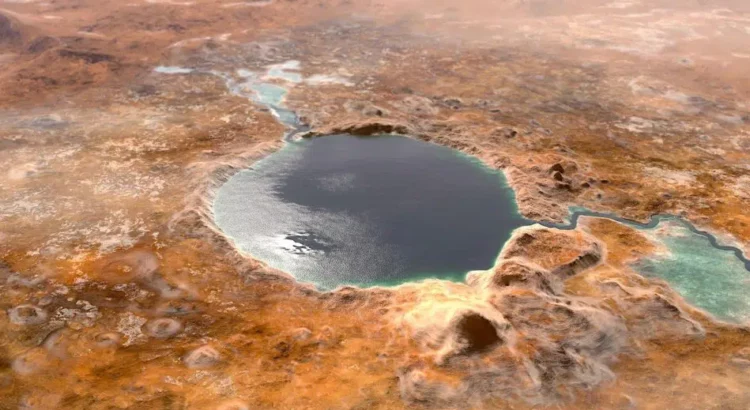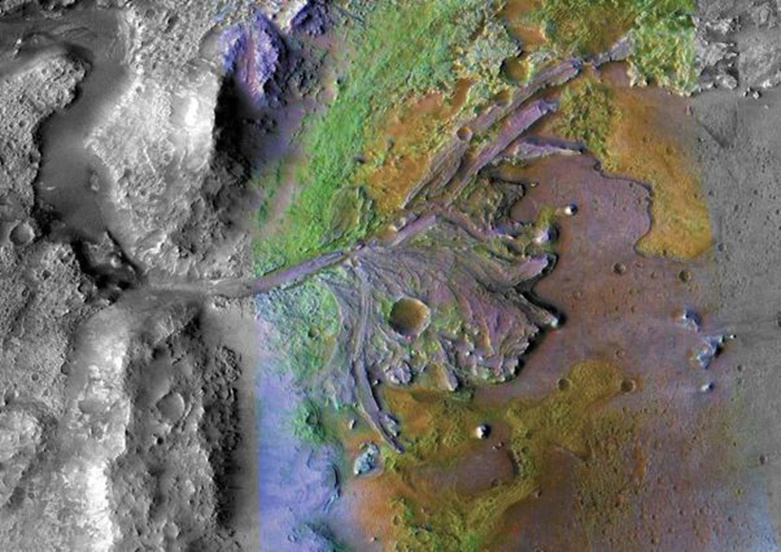Perseverance rover reveals traces of sediment in lake on Mars

The Jezero Crater delta deposits contain different layers of sediment that confirm the previous presence of water, and therefore a lake, on Mars.
While the Ingenuity mission ends after three years of loyal service and 72 flights, the Perseverance rover will continue its walks and studies on the soil of Mars, and more precisely in the Jezero crater which sheltered a lake. Arriving inside this crater in February 2021, the small vehicle films the ground, but also collects samples in the hope of finding traces of previous life.

Now, using the device's RIMFAX (Radar Imager for Mars' Subsurface Experiment) instrument, researchers from UCLA and the University of Oslo have revealed new clues about how the sediment layers formed over time on the crater floor.
It was between May 10 and December 8, 2022 that Perseverance crossed the area between the bottom of Jezero crater and the delta. During this journey, RIMFAX detected a distinct discontinuity in the structure of the underground layer. Equivalent to LIDAR on Earth, this instrument provides continuous subsurface images probing up to 20 meters below the rover

Life was able to develop
“From orbit we can see a lot of different deposits. But we cannot say with certainty whether what we are seeing is their original state or whether we are seeing the conclusion of a long geological history ,” writes David Paige, lead author of the study . “To know how these things formed, we need to look beneath the surface. »
What is certain is that the radar shows traces of sediments deposited by the water that once filled the crater. It is therefore possible that microbial life developed in the crater at this time. If so, sediment samples extracted from this area would contain traces of their remains. To be sure, we will have to wait until the next decade when missions will collect the samples and bring them back to Earth.

Strata like on Earth
In their press release, the researchers recall that they have identified two distinct periods of deposition. We can thus discern layers of sediment on the bottom of the crater which appear regular and horizontal. Exactly, like the different layers of strata that we see on Earth.
Radar data reveals irregular relief at the bottom of the crater, probably suggesting erosion prior to the first accumulation of sediment. Subsequently, as the lake gradually dried up, the sedimentary strata within the crater underwent erosion, giving rise to the geological features currently observable on the surface of Mars.
“The changes we observe in the rocks are due to large-scale changes in the Martian environment,” continues David Paige in the press release. "It's interesting to see so much evidence of these changes in such a small geographic area, allowing us to extend our findings to the scale of the entire crater." »
Source: websites

